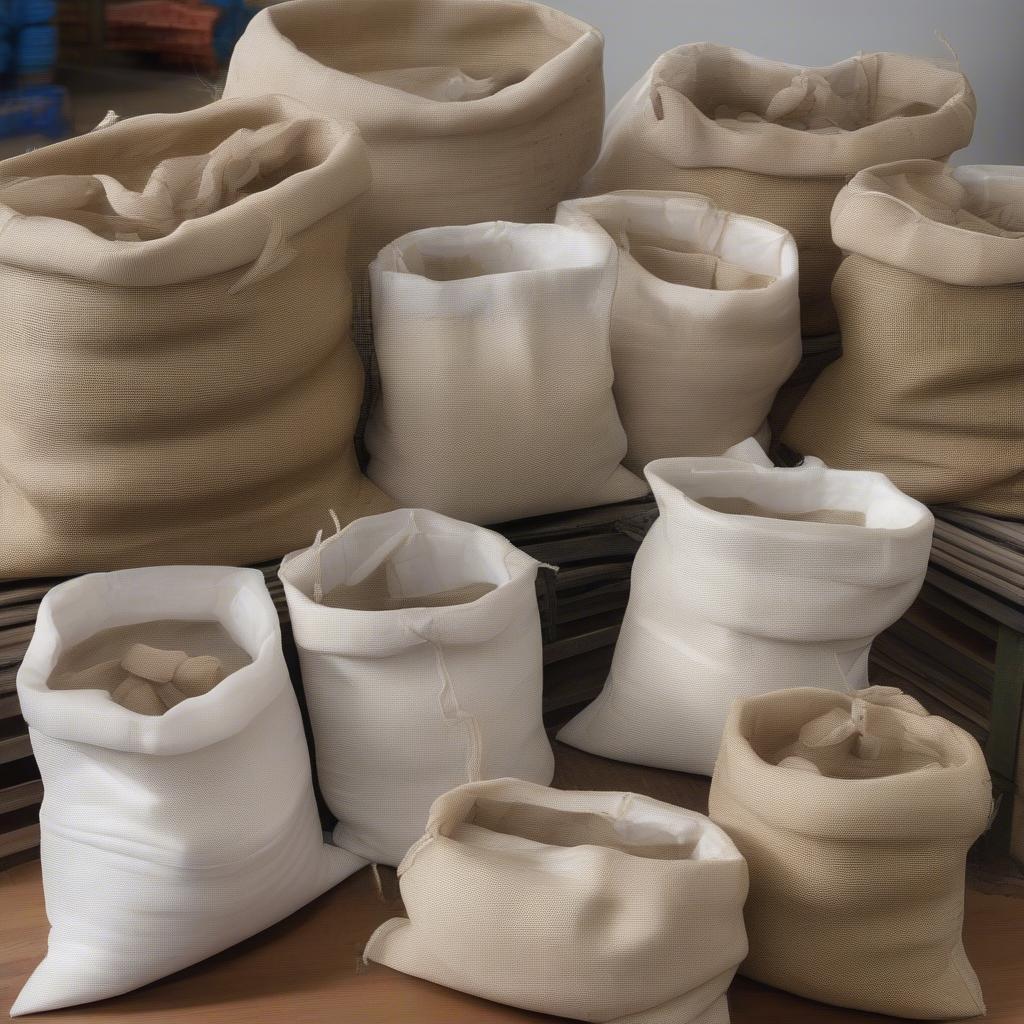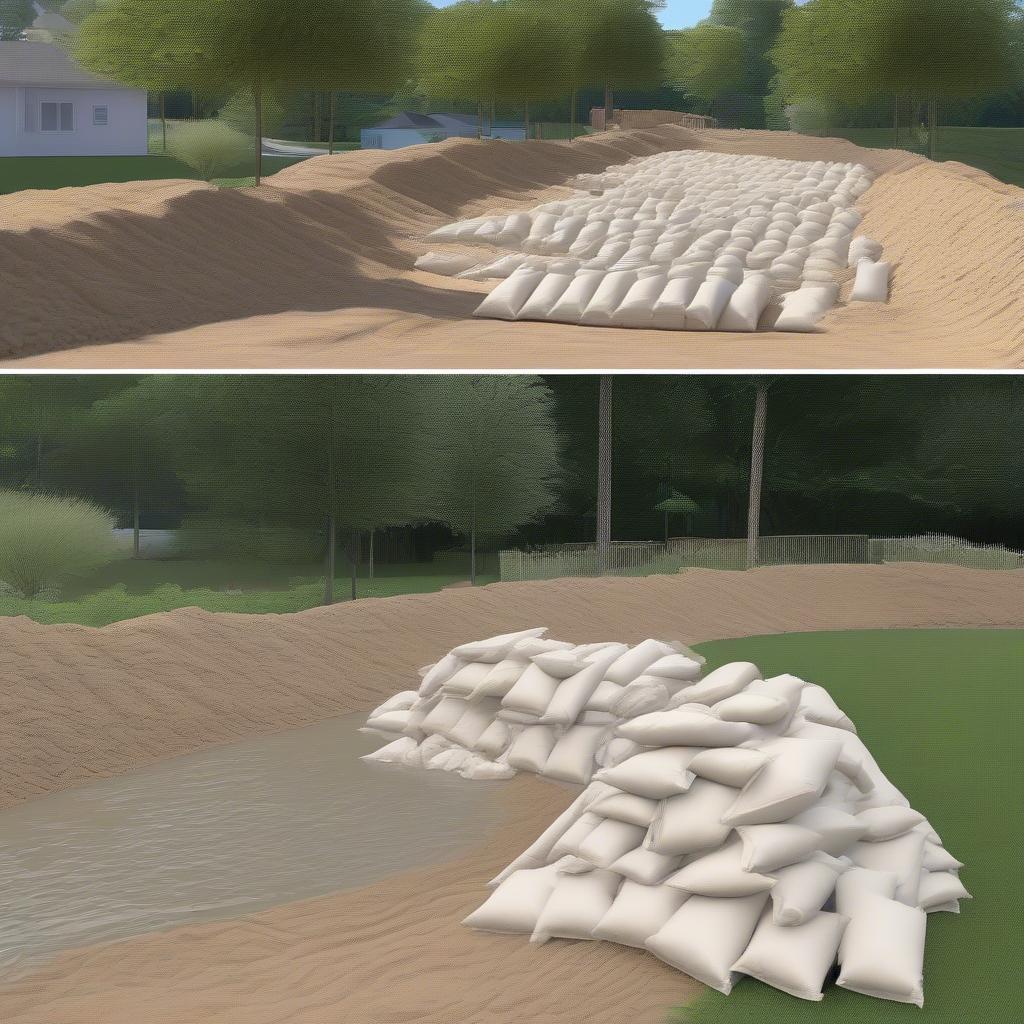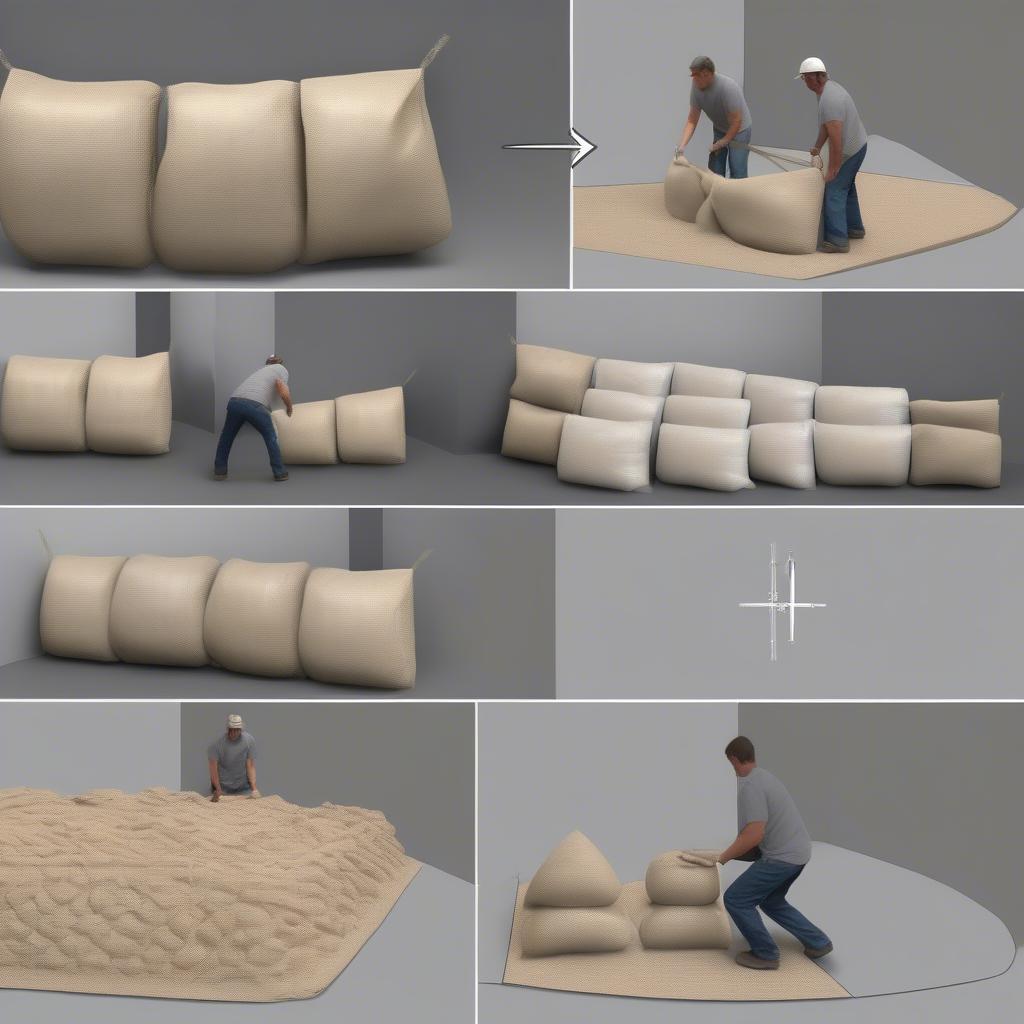Woven Bag
Woven Sand Bags: A Comprehensive Guide
Woven Sand Bags are a versatile and cost-effective solution for a variety of applications, from flood control to landscaping. These robust bags, typically made from woven polypropylene or other durable materials, offer a practical way to manage erosion, create temporary barriers, and even add a touch of rustic charm to gardens and outdoor spaces. Let’s delve deeper into the world of woven sandbags.
Understanding Woven Sand Bags: Materials and Construction
 Woven sand bags made from various materials like polypropylene and burlap showcasing different construction methods.
Woven sand bags made from various materials like polypropylene and burlap showcasing different construction methods.
Woven sandbags are typically made from polypropylene (PP), a strong, lightweight synthetic material resistant to rot, mildew, and UV degradation. This makes them ideal for outdoor use, even in harsh weather conditions. poly woven sand bags are a popular choice for flood control due to their durability and resistance to water damage. Other materials used include burlap, a natural fiber that is biodegradable and offers a more rustic aesthetic.
Different Types of Woven Sand Bags
There are various types of woven sandbags available, each designed for specific purposes. woven sand bags with tie offer a convenient way to secure the bags after filling, preventing spillage and ensuring stability. These are often preferred for flood control and erosion management.
Applications of Woven Sand Bags
Woven sand bags are incredibly versatile and find use in a wide range of applications. Their strength and adaptability make them suitable for both temporary and more permanent solutions.
Flood Control and Erosion Management
Perhaps the most common use of woven sand bags is for flood control. They can be quickly deployed to create temporary barriers, diverting floodwaters and protecting properties from damage. Their weight and interlockability make them effective at holding back rising water. pp woven sand bag are especially useful in these situations due to their resistance to water damage.
Landscaping and Gardening
Woven sand bags can also be incorporated into landscaping projects, creating retaining walls, raised garden beds, and even decorative elements. Their natural appearance blends well with outdoor environments.
Construction and Civil Engineering
In construction and civil engineering, woven sand bags are used for temporary weight bearing, erosion control, and stabilizing slopes.
 Woven sand bags used in various applications, like flood control, landscaping, and construction.
Woven sand bags used in various applications, like flood control, landscaping, and construction.
“Woven sandbags offer a practical and affordable solution for a multitude of challenges,” says landscape architect, Sarah Miller. “Their adaptability makes them a valuable tool in both emergency situations and planned projects.”
Choosing the Right Woven Sand Bags
Selecting the right woven sand bag depends on the specific application. Factors to consider include material, size, and weaving pattern.
Factors to Consider
- Material: Polypropylene offers durability and water resistance, while burlap is biodegradable and more aesthetically pleasing in certain settings.
- Size: Consider the size and weight of the filled bags when choosing the appropriate size.
- Weaving Pattern: A tight weave ensures strength and prevents leakage.
Filling and Placing Woven Sand Bags
plastic woven sand bags are typically filled one-third to two-thirds full, allowing for flexibility and stacking. They should be placed in an overlapping pattern, creating a strong and stable barrier.
 Proper technique for filling and placing woven sandbags for effective flood control and other applications.
Proper technique for filling and placing woven sandbags for effective flood control and other applications.
“Proper placement is crucial for maximizing the effectiveness of woven sand bags,” advises civil engineer, John Davis. “Overlapping and staggering the bags creates a much stronger and more stable barrier.”
Conclusion
Woven sand bags are a versatile and essential tool for various applications. From flood control to landscaping, their durability, affordability, and ease of use make them an invaluable resource. Choosing the right type and employing correct filling and placement techniques ensures optimal performance and effectiveness. By understanding the different types available and their specific uses, you can effectively utilize woven sand bags for your project needs. white woven sand bags can be particularly useful for visibility in low-light situations.
FAQ
-
What are woven sand bags made of? They are commonly made from woven polypropylene or burlap.
-
How do I fill a woven sand bag? Fill them one-third to two-thirds full, allowing for flexibility.
-
Where can I buy woven sand bags? They are available at most hardware stores and online retailers.
-
Are woven sand bags reusable? Yes, polypropylene bags are reusable, while burlap bags may degrade over time.
-
How long do woven sand bags last? Polypropylene bags can last for several years with proper care.
Need help with woven sandbags for your next project? Contact us at Hanoi, Vietnam or Tech Avenue, Suite 12, San Francisco, CA 94105, USA. We have a 24/7 customer support team.
